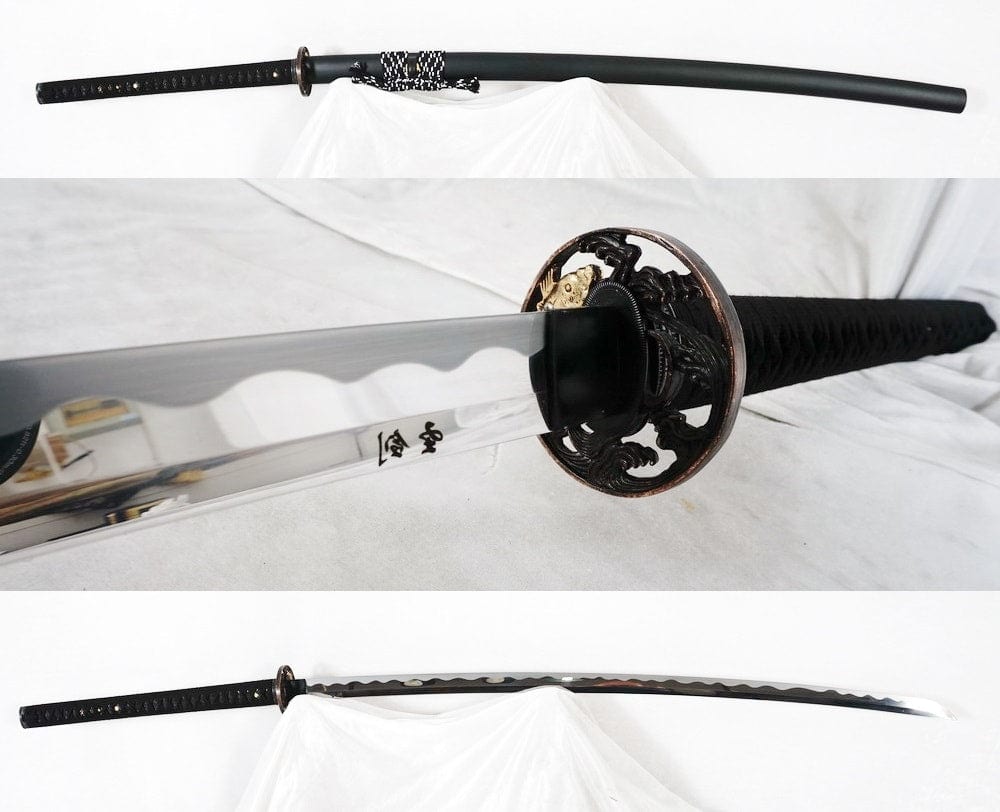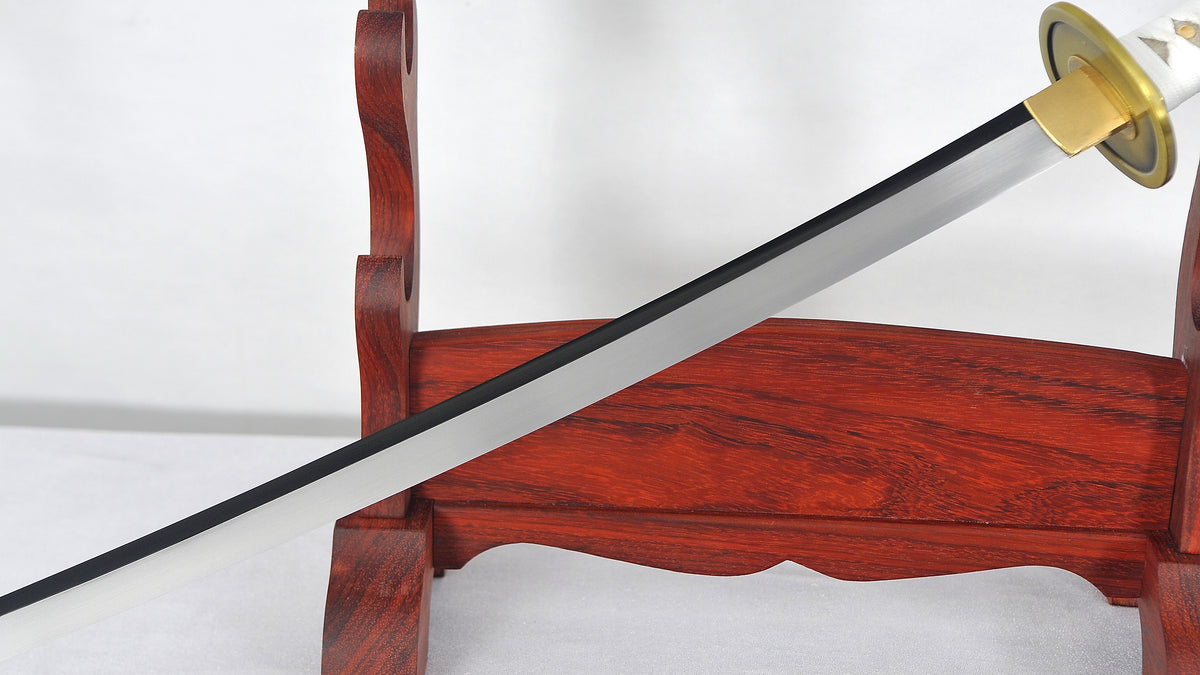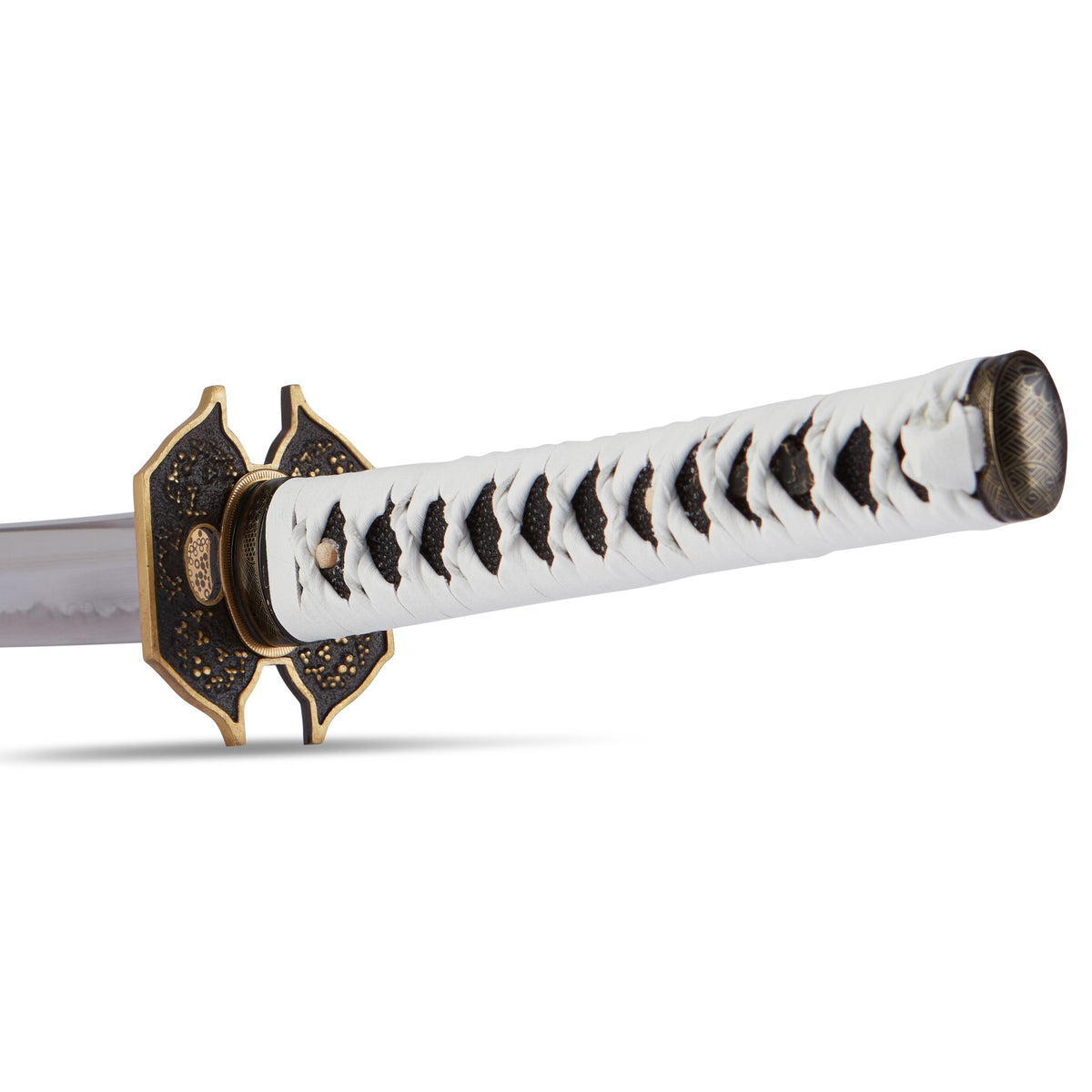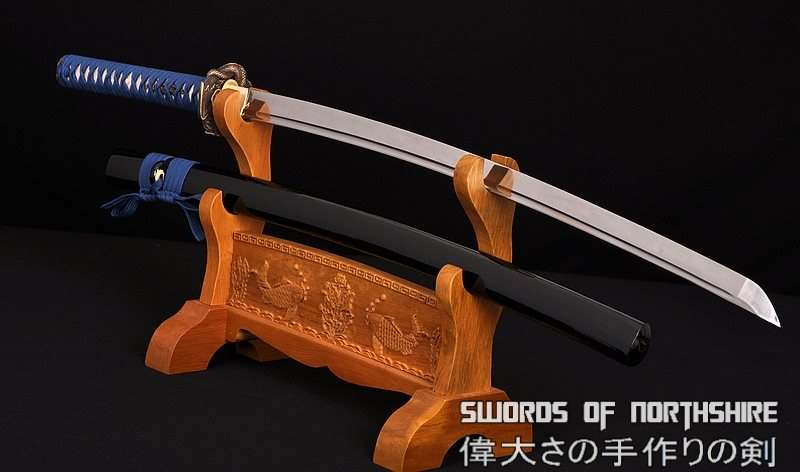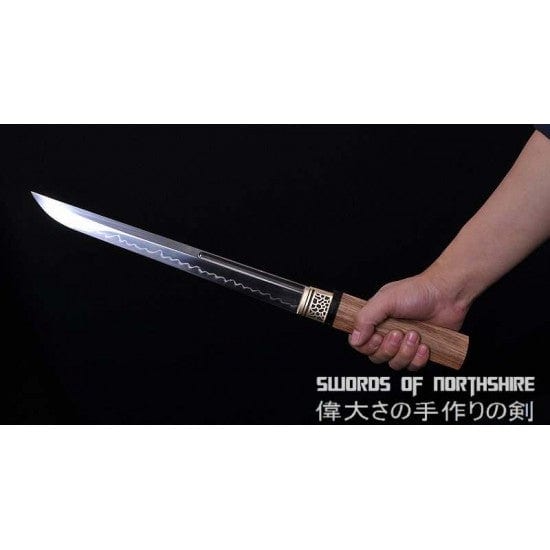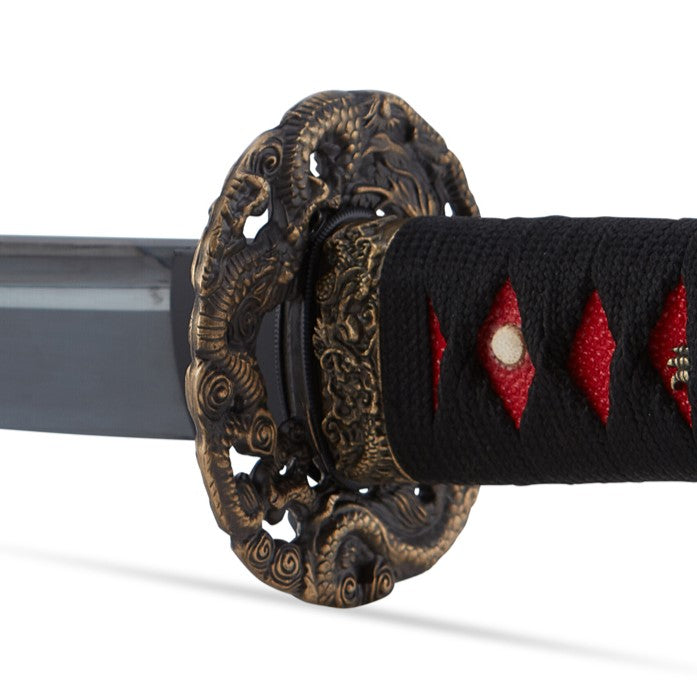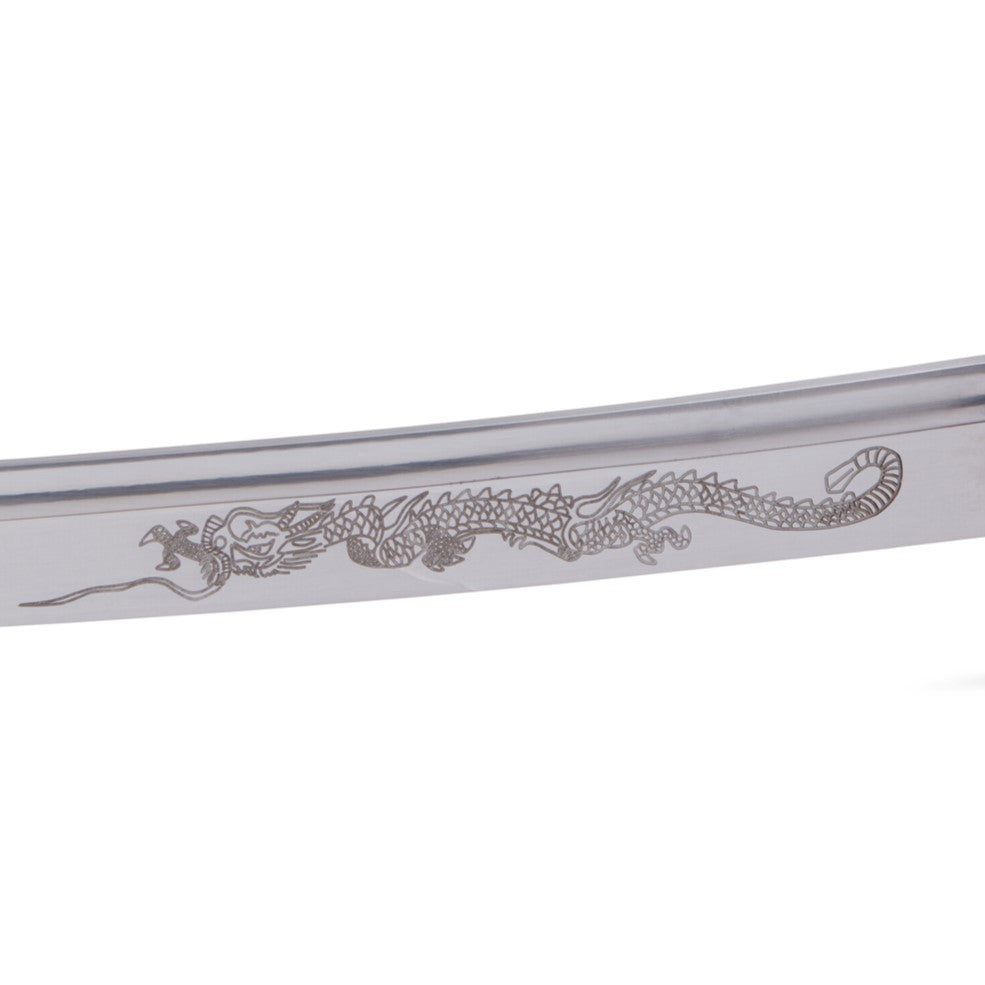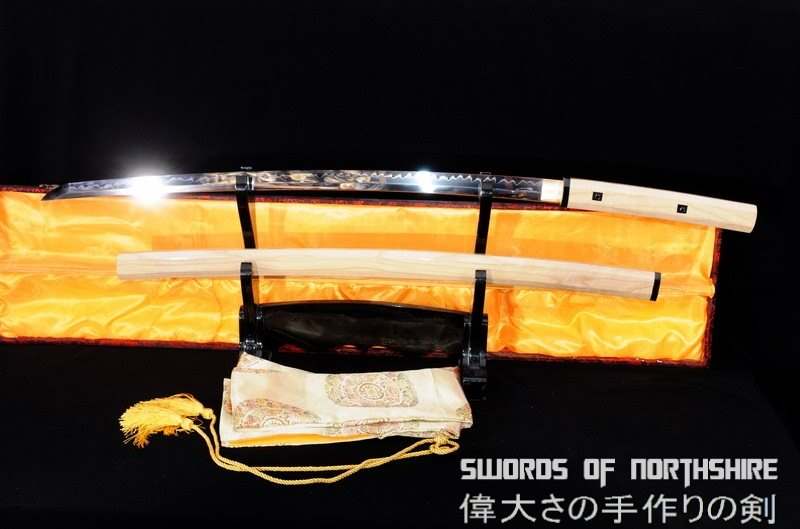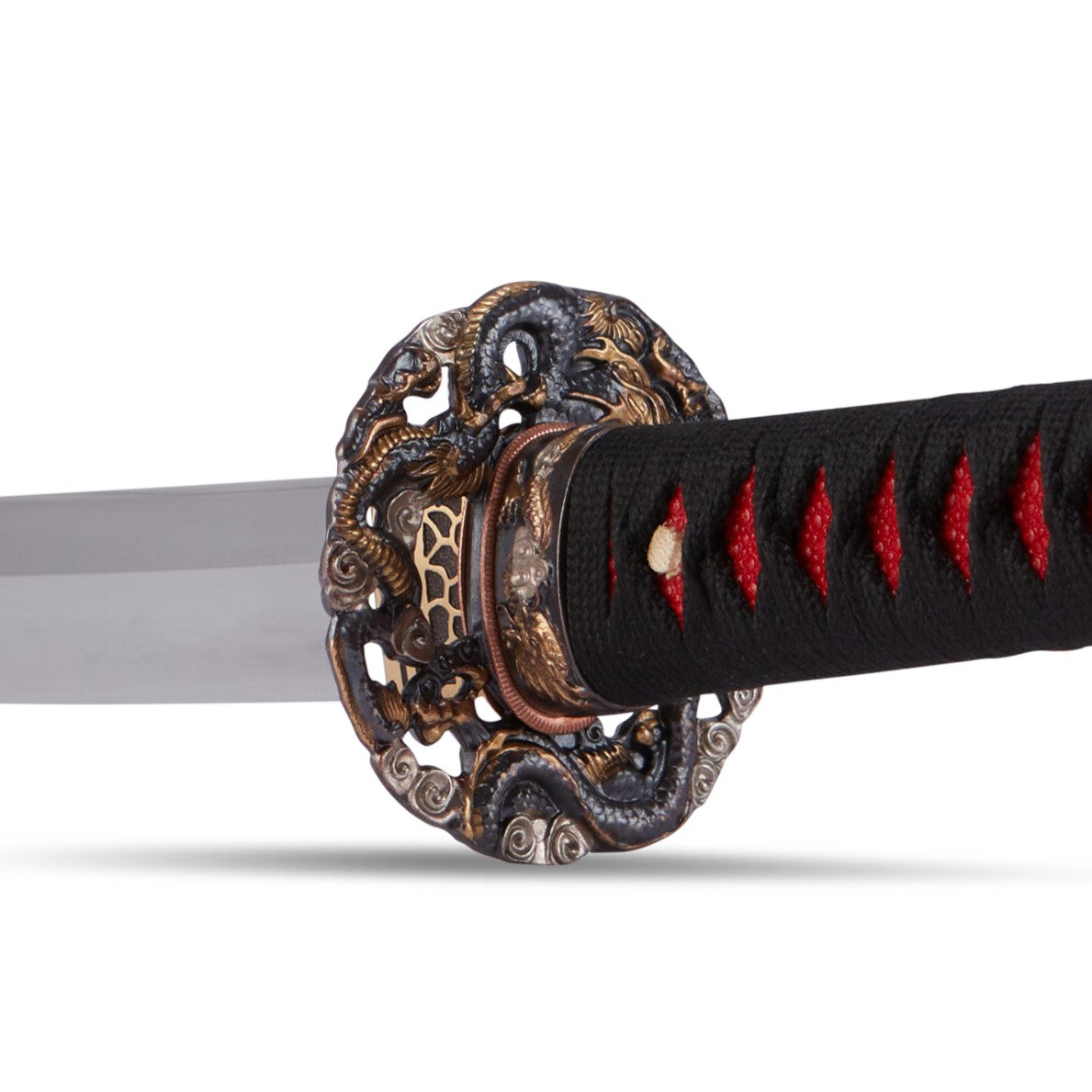How to Date a Japanese Sword

Learn How to Identify Old Swords
Evidence of swords in Japan dates back to the 700s. These original creations were made from bronze and were typically curved. The more traditional Japanese swords, including the katana, odachi, tachi, and others, date back to around the Nanbokuchō period in the 1300s. With such a long stretch of history in which swords of similar design were made, it can be tough to figure out exactly when a particular blade was forged.
At Swords of Northshire, we’re here with some tips to help you figure out how to date a Japanese sword. The following guidelines are meant to be a general overview, as no single indicator can determine the exact age of a sword. You must comprehensively examine your blade, taking all its features into consideration before deciding how to date your Japanese sword. We don’t recommend you do the examination yourself unless you’re a professional because it requires sword disassembly, which can be dangerous to both you and the sword.
Whether you recently came into possession of an old sword or you’re hoping to find antique swords at your local consignment store, we can help you learn more about how to identify old swords.
1. Real or Replica?
Before you consider learning how to date a Japanese sword, your first step is to figure out if it’s even an authentic antique piece. Japanese smiths take great pride in their work, and many modern swords made for iaito or display are held to the same standards and use the same smithing techniques as ancient designs.
If you have any doubt about the age of a sword, you should first check it with a magnet. This method is an easy way to learn how to identify old swords. Steel is magnetic, but aluminum is not. Any sword made of aluminum is a modern version of a traditional samurai sword. However, even if the blade is steel, keep in mind that many smiths still forge modern replicas with steel materials to ensure their strength and durability. This technique is only step one in learning how to date a Japanese sword. Again, you must take the rest of the sword's qualities into consideration before deciding if it’s a genuine antique.
2. Identifying the Hada
The hada of a blade is the visible grain in the steel. A hada grain is different from a hamon line and much more challenging to identify. A poorly polished piece or one that has rusted can heavily obscure the hada, making it seem as if there isn’t one. Most handmade pieces will have a distinctive grain that indicates the smith used the folding forging method. If you don’t see a hada, don’t worry – some of the oldest blades won’t show a prominent hada. Furthermore, some very well-made pieces from more recent eras do show the grain.
3. Finding the Hamon

Once you’ve identified the hada on your journey to learning how to date a Japanese sword, it’s time to look for the hamon line. Sometimes, the hamon line is actually etched and not folded and forged naturally into the blade. One giveaway of an etched hamon line is when it’s visible as a smooth cloud without any variation or internal features. A true hamon line may show small specks and dots along the border.
An etched hamon line doesn’t necessarily indicate a low-quality or fake Katana sword. It simply indicates a more modern design, as etching techniques hadn’t yet developed in ancient Japan. A smooth hamon line is a critical part of how you identify old vs. new swords.
4. Serial Numbers
Many Japanese blades have markings. Some markings are hand-carved while others are stamped. Those swords with stamped blades are most likely machine-made – usually from World War II. They are not considered authentic antiques, called nihonto, and were not wielded by real samurai. If your sword has markings on the blade that are not a serial number or arsenal stamp, this may indicate that you have something special.
Sword Markings
When it comes to how you date a Japanese sword, it’s important to note that the higher quality Japanese swords were usually inscribed with the date they were made and signed by the blacksmith who made them. While sword inscriptions (also called nengo) dated before the 1200s are extremely rare, there are annotations that can hint at when and where a sword was made. Inscriptions are usually read from top to bottom and include the period (nengo), number of years in the period (nen), month (gatsu), and day the sword was completed (hi). A typical inscription may read something like this: “16th Year of Showa, 3rd Month, 4th Day.”
If you’re interested in translating the inscription into the modern, Westernized calendar, you would need to add the number of years listed in the inscription to the beginning of that period. The Showa Period, for example, lasted from 1926 until 1989. So, the 16th year of that period would be 1942. The inscription sample above is from March 4th, 1942.
There is one added complication to dating a sword by these inscriptions: the segregation of the Japanese Imperial Court. For much of the 1300s, there was a Southern and a Northern Court. While many swords will have the dates inscribed in the style of the Southern Court, there are a few swords that used the style of the Northern Court. Additionally, there is a third style of inscription that was used during World War II, called archaic zodiacal dating. Determining the inscription style first will be the key to learning how to date a Japanese sword.
5. Blade Polishing
Next step in how to date a Japanese sword? Looking at the sharpening technique. Is your blade sharpened all the way down to the hilt? If not, this can mean two things: one, that the sword simply wasn’t well maintained, or two, that it was a deliberate choice common in World War II-era blades. The sharpening method is no guarantee of age, but when combined with markings, hamon, and hada, you should be getting a pretty good picture of the age of your sword.
6. Examining the Tang

Most Japanese swords are held together using mekugi pegs. These pegs are little screws that attach the handle to the blade. If you remove the mekugi, your blade will slide out of the handle. Some swords have two mekugi, one near the guard and the other at the end of the hilt. When examining the tang, there are two indicators of age. The first is when you have a full tang weapon, where the metal of the blade is long enough to slide all the way into the hilt. If your sword doesn’t have a tang, not only is it not authentic, it’s not even usable!
The second indicator of age is the rusting on the tang. Do not remove the rust, as it can be dated to indicate the age of the weapon. New swords usually have a gray tang with a bit of red rust, but older swords have tangs that have rusted to the point where they’re a smooth brown or deep black. Any tampering of the tang will make determining its age harder, makes authenticating the blade impossible, and may reduce its value. Let a professional who knows how to date a Japanese sword take a look at the rusting and test it before doing anything else.
7. Gimmicks
There are many swords that have unique features that seem cool but were actually just gimmicks designed to sell. Sword canes and intricately carved handles are two indicators that a weapon was probably never meant to be used in battle.
Sword Canes
Also known as shikomi-zue, sword canes are typically very low quality. They were produced between the late 19th and early 20th centuries. These types of swords have very straight and thin blades, the opposite of the slightly curved katana and wakizashi of the samurai. Additionally, sword canes tend to have many flaws in the metal, as the shape and thinness of the blade lend themselves to runs, chips, and delamination of the metal.
Carved Handles

If you ever see a sword with an intricately carved handle, you can almost be sure that it’s not a collectible. Intricately carved handles are usually made of bone, and they have very low-quality mountings. While you can find everything from a tanto to a tachi with a carved bone handle, be wary of the quality of the work.
Ninja Swords
If anyone tells you that they have an authentic ninja sword from Japan, they’re probably not showing you the real deal. There is only very tenuous historical documentation that ninjas used specially designed swords that varied greatly from the traditional samurai weapons. While ninjas were real, evidence suggests they probably used very similar weapons to every other warrior class.
Time to Date Your Swords
Now that you know a little bit more about how to date a Japanese sword, you have a base from which to start exploring. Visit museums to see some of the above indicators in real life, authenticated weapons, and practice how to identify old swords!
Interested in buying a modern replica? Browse the collection at Swords of Northshire today!
Best Sellers
- Regular Price
- from $199.99
- Sale Price
- from $199.99
- Regular Price
-
- Unit Price
- per
- Regular Price
- from $299.99
- Sale Price
- from $299.99
- Regular Price
-
$0.00
- Unit Price
- per
- Regular Price
- from $619.99
- Sale Price
- from $619.99
- Regular Price
-
- Unit Price
- per
- Regular Price
- from $179.99
- Sale Price
- from $179.99
- Regular Price
-
- Unit Price
- per
- Regular Price
- from $319.99
- Sale Price
- from $319.99
- Regular Price
-
- Unit Price
- per
- Regular Price
- from $339.99
- Sale Price
- from $339.99
- Regular Price
-
- Unit Price
- per
- Regular Price
- from $219.99
- Sale Price
- from $219.99
- Regular Price
-
- Unit Price
- per
- Regular Price
- from $199.99
- Sale Price
- from $199.99
- Regular Price
-
- Unit Price
- per
- Regular Price
- from $364.99
- Sale Price
- from $364.99
- Regular Price
-
- Unit Price
- per
- Regular Price
- from $479.99
- Sale Price
- from $479.99
- Regular Price
-
$0.00
- Unit Price
- per

